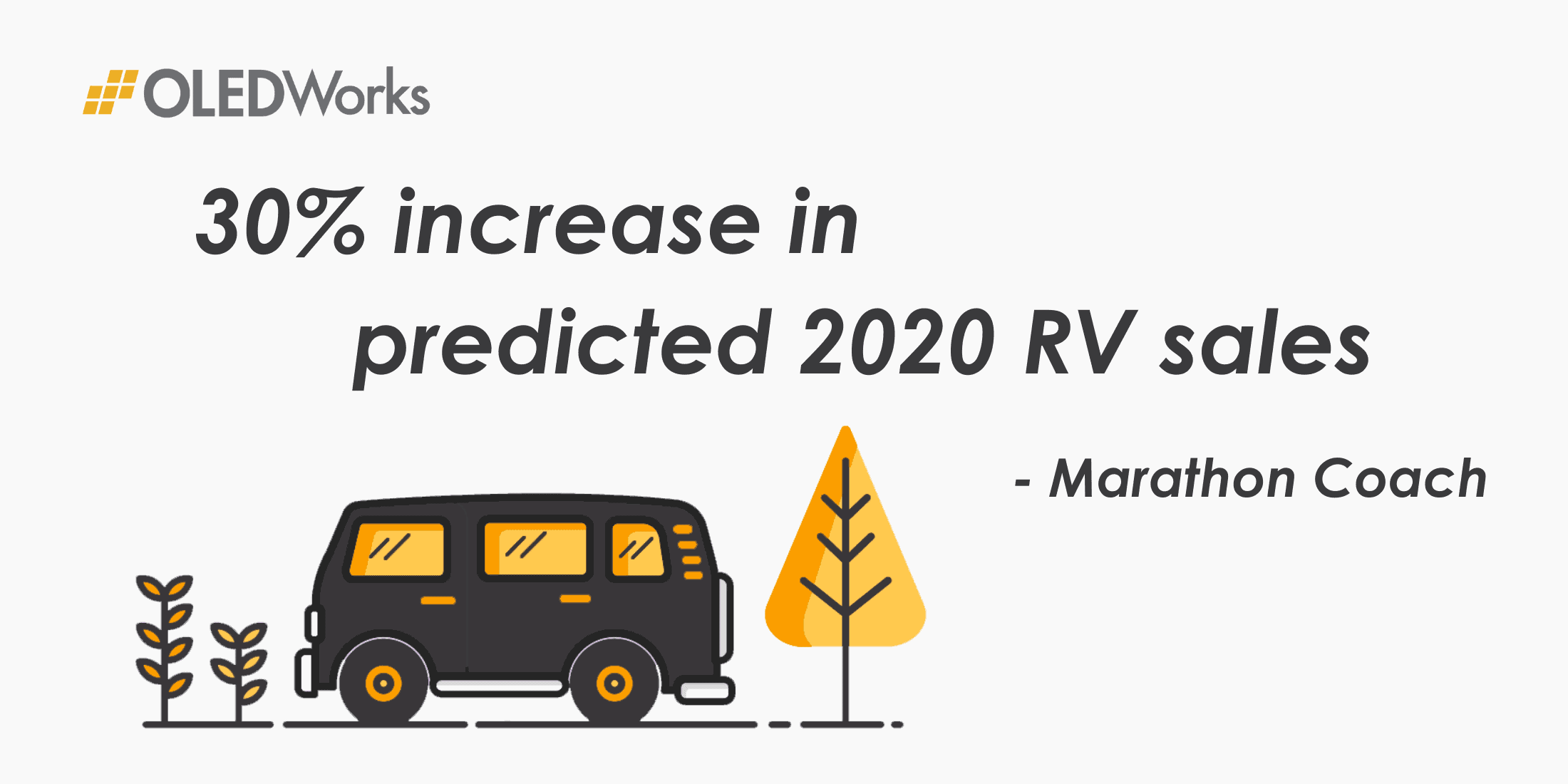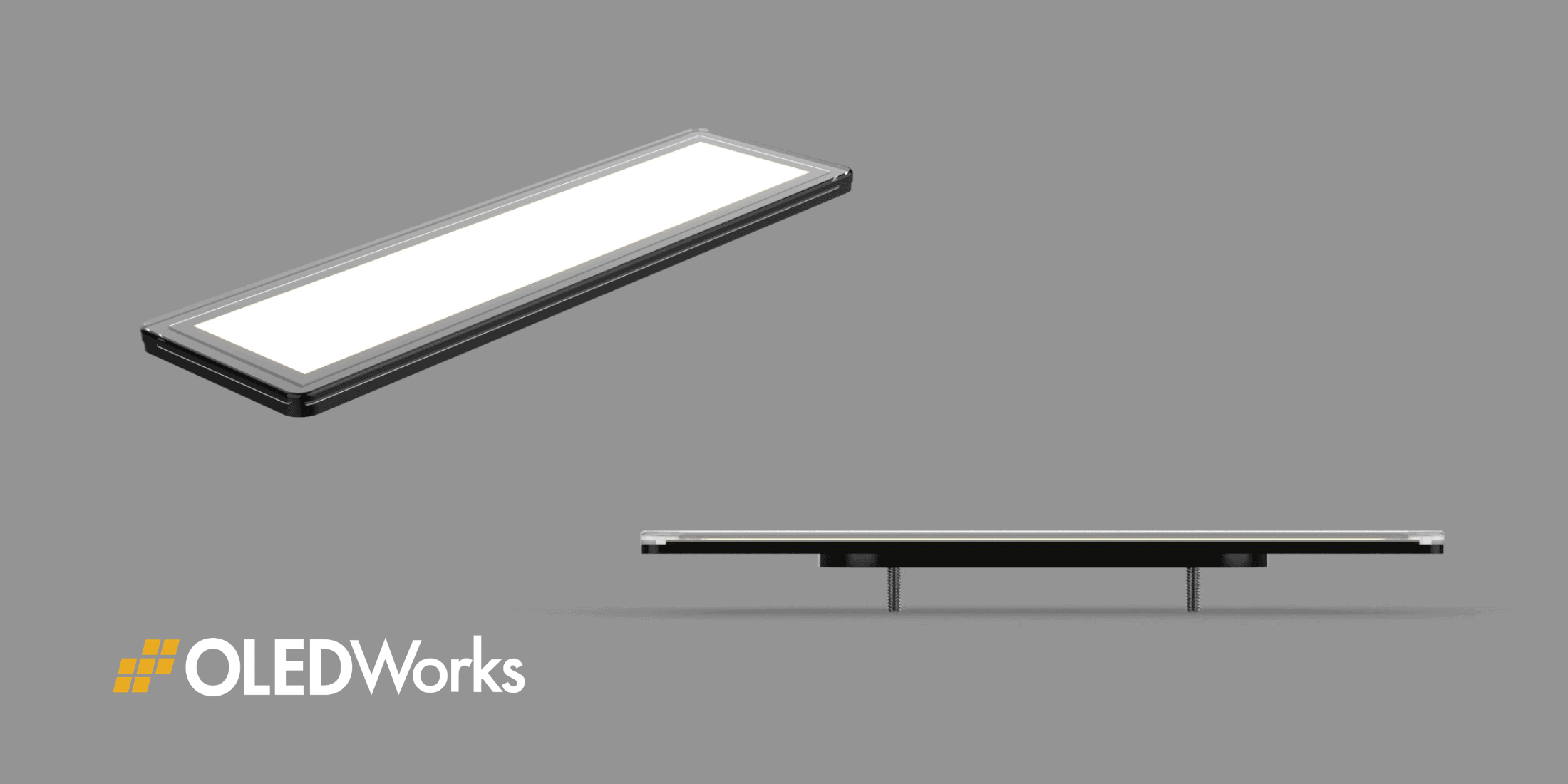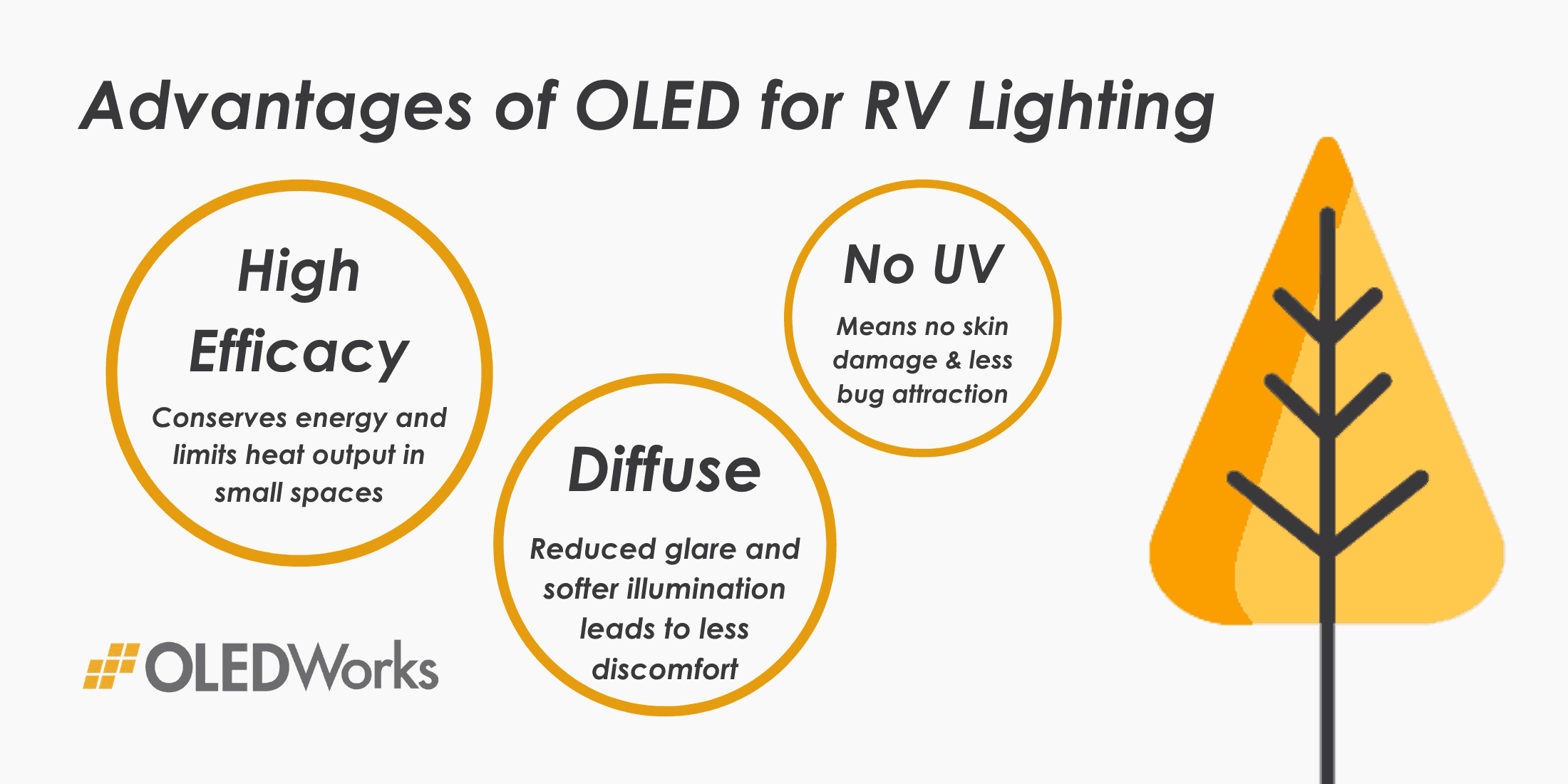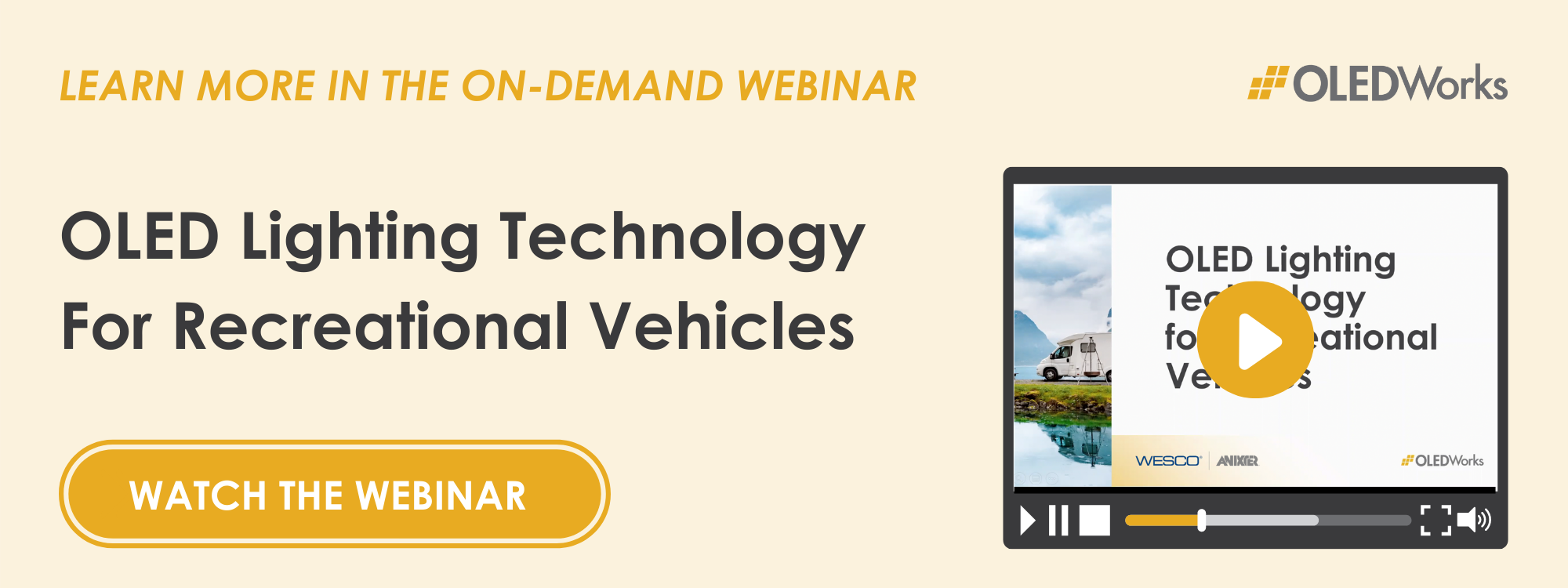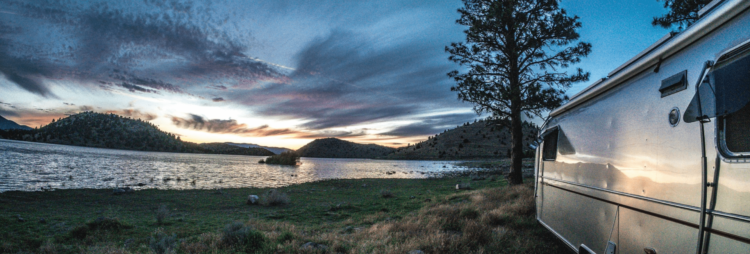![[On-Demand Webinar] OLED Lighting Technology for Recreational Vehicles](https://www.oledworks.com/wp-content/uploads/2021/06/RV-Webinar-Header-750x254.png)
By Dr. Kathleen Vaeth, Director of OLED UX
The summer is finally here, and with the warmer weather and break in school schedules, many turn to exploring new destinations and making new memories. Of course, the summer of 2020 is framed quite differently for most than in years past. The current travel restrictions across international borders and quarantine requirements across some U.S. state borders have forced many to reconsider their summer plans.
The current health situation has also increased interest in ‘socially distanced vacations’, with people turning to outdoor destinations such as beaches, campgrounds, and state and national parks. This has been accompanied by a rethinking in accommodations, with travelers gravitating toward options that enable more socially distanced measures. Of particular note are the reports of increased interest and sales of recreational vehicles (RVs). Mobile and self-contained, RVs offer the flexibility of travel and ability to reach remote locations in a more controlled health environment compared to rental properties or hotels.
Increase in RV Sales in 2020
Recreational vehicles span a range of vehicle types and sizes, from smaller units such as pop-up campers, to larger towed units such as trailers and fifth wheels, and fully integrated motor-homes. Each are designed for different group sizes, ease of transport, and trip length. Sales of RVs are often considered an economic indicator, increasing in times of prosperity, and slowing before times of recession.
According to the RV Industry association, 46 million Americans plan on taking an RV trip this year, up from 25 million in 2019. Year over year sales of RVs in the U.S. were up in January of 2020, and after a pause during the shutdown in some states this spring, many showrooms are reporting that retail foot traffic and sales are up, particularly with first time buyers. Indeed, Airstream reports an 11% rise in sales for the first three weeks of May 2020 compared to the same period last year, and Marathon Coach predicts that sales for 2020 will be up 30% overall. RV rental companies such as RVShare and Outdoorsy have also reported explosion in rentals, with 88% of Outdoorsy’s May bookings coming from first time users of the service, and both companies seeing a steady rise in last minute bookings.
If you haven’t been in an RV lately, take a trip to your local showroom, as you could be pleasantly surprised. These vehicles may enable travel to remote places in the great outdoors, but the interior design has progressed significantly in recent years, allowing travelers to bring the comforts of home along with them. High quality cabinets, quartz counter tops and spacious kitchens, leather seating, flat screen TVs, air conditioning, solar power, and Wi-Fi connectivity are common features in today’s models. But what about comfortable lighting?
Skylights and wider windows that provide access to daylight are also trending, but a recent visit to several RV showrooms revealed that the artificial lighting in these units have not progressed as much by comparison. At OLEDWorks, we think that this is next frontier for designers to address and continue the revolution of the indoor RV space.
Requirements of Artificial Lighting in Recreational Vehicles
Artificial lighting in recreational vehicles has several requirements. It must light the interior of the vehicle well, particularly for the evening and nighttime hours when travelers are more likely to be moving about inside it. This favors the warmer color temperatures, and diffuse illumination that minimizes glare and harsh shadows that can lead to eye strain. Lighting should also have high efficacy, particularly for off-grid use in remote areas or boondocking locations such as Wal-Mart parking lots, to minimize battery usage. Efficacy is also important for limiting heat generation inside the enclosed space and ensuring occupant comfort, which can sometimes be an issue with older technologies such as incandescent and halogen bulbs.
Fixtures with thin and compact profiles provide flexibility for integration of lighting, and lightweight design allows for maximum fuel efficiency. Lighting should also be low maintenance with long operational lifetimes, so owners are not surprised with failures or have the inconvenience of carrying around replacement parts. For higher-end models, aesthetics can also be important, with pendant fixtures in the kitchen and dining areas, and reading lights for close illumination in the sleeping areas. And, as any outdoor adventurer can attest, lighting can attract unwelcome visitors such as mosquitoes and moths.
Lighting in RVs Today
If you step into an RV today, and you will see that current designs use a mix of artificial lighting solutions. Some manufacturers still use inefficient, heat-generating incandescent bulbs, but many newer models have gravitated to more efficient halogen, compact fluorescent, and LED based lighting. Most fixtures are small and compact but tend to be integrated into ceilings as recessed lighting or circular flush mounted fixtures with push button switches. Specialized fixtures integrated for closer, more flexible illumination in spaces such sleeping areas can often be overly bright, or too dim. This can make for an illumination experience, even in the most state-of-the-art models, that is uneven with sharp contrast and shadows, and high in glare, which can cause discomfort and eye strain.
Use of a mixture of lighting technologies can also result in variation of illumination color temperatures in the interior of the RV, which can contribute to eye discomfort. Cooler color temperature illumination that contains more blue light at wavelengths in the range of 480 nm in its spectrum can also be undesirable for the evening hours, and UV and short blue illumination wavelengths have also been shown scientifically to attract some insects.
OLED Lighting for RV Use
The RV space is ready for the next generation in lighting solutions which Organic LED technology offers. OLEDWorks panels are compatible with the 12 V electrical systems typically found in these vehicles, and produce lighting that is soft and diffuse, providing an even, low glare illumination that fills the space without straining the eyes. Our high efficacy Brite 3 OLED panels, which come in a variety of shapes, draw 0.2 amps to produce 300 lumens, which is roughly an order of magnitude lower than the 1.6 amps required for a typical 12 V incandescent bulb. Considering that this savings is gained per fixture, and the number of fixtures that are in a typical RV, the potential power savings can be significant.
Higher efficacy also means minimal heat generation. OLEDs are cool to the touch during operation and can be used comfortably in fixtures placed close to the user such as reading lights. With an operational (LM70) lifetime of 30,000 hours at 300 lumens, the panels are low maintenance, with no need to store replacement fixtures. Unlike LED lighting fixtures, OLEDs provide an even surface emission from the entire panel, so there are no bright hotspots or need for heat sinks. This means that OLED lighting panels, measuring 1.4 mm in thickness and weighing less than 40 grams, offer an ultra-compact and lightweight form factor that opens up the possibility of easily integrating lighting on horizontal and vertical surfaces, or in compact locations such as under cabinets and in drawers. OLED lighting also has a mirror finish in the off state, providing a sleek aesthetic that can be used to accent the space, or blend into the background. Examples of potential fixtures and form factors can be seen below.
Make Your RV Lighting Healthier with OLED
OLED technology is also compatible with important future lighting trends, which are increasingly emphasizing lighting design for sustainability and human health, and more granularity in communication. Driven by direct current, OLED lighting has dimming capability, and can be combined with sensors and other smart lighting software and hardware to allow illumination from daylight and artificial light to be integrated together for more effective RV power management.
The inherent surface emission of OLED lighting also provides the ability to selectively address certain area segments of the panel with high contrast, which enables the ability to communicate through light for safety, branding, and other personalization purposes.
OLED lighting contains no UV light, and has been certified to present no photobiological risk to the skin and eyes (IEC 62471). The illumination spectrum is also low in short blue light wavelengths, which have been shown to interact with non-visual receptors in the eye that impact the circadian rhythm. Although there is still much to be learned about the mechanisms that govern these processes, some studies have suggested that these wavelengths can interfere with the sleep/wake cycles and disease fighting processes in the human body, making lighting design a powerful way to enhance human health, and OLED lighting technology an important tool to enable it.
Lighting design is integral to the comfort and function of any space. With the leaps and bounds that the RV space has come in other areas of design, it’s only fair that lighting now receive the same level of attention.

